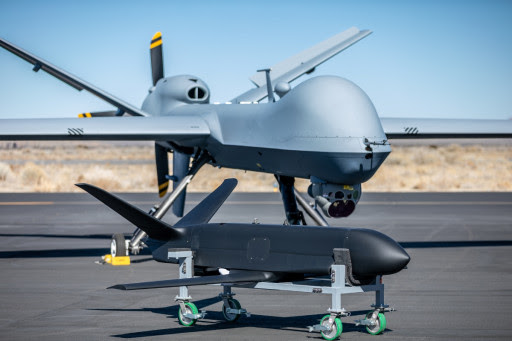UAS Leader Integrates DAPS Digital Manufacturing Process
SAN DIEGO, Feb. 15, 2023 (GLOBE NEWSWIRE) — General Atomics Aeronautical Systems, Inc. (GA-ASI), the world’s leading manufacturer of Unmanned Aircraft Systems (UAS), radars, electro-optic and related mission systems, is partnering with Divergent Technologies, Inc. (Divergent) to support its Additive Manufacturing applications development efforts and implement a full digital manufacturing process for GA-ASI’s products. Divergent has developed a data-driven approach to design, fabricate and assemble vehicle structures called the Divergent Adaptive Production System (DAPS). GA-ASI is working with Divergent to apply this capability to manufacturing its line of UAS.
“Throughout our 30 years of designing and developing advanced UAS, GA-ASI has been focused on implementing new capabilities into our manufacturing process,” said GA-ASI President David R. Alexander. “We’re working with Divergent to integrate their technology as part of our Additive Design and Manufacturing Center of Excellence strategy, with the goal of optimizing our design and manufacturing processes and providing next-generation UAS at the lowest cost.”
In 2022, GA-ASI began a joint development program with Divergent, which led to a stronger strategic partnership on multiple platforms. GA-ASI’s Additive Manufacturing (AM), aircraft integrity, material and design engineering teams are working with Divergent to adapt, apply and qualify its automobile industry-qualified technology to GA-ASI’s aircraft production. Divergent has grown within the automobile sector as a Digital Manufacturing process innovator, producing some of the fastest cars on the market with several recent car OEM adoption announcements.
“Divergent has invented the first industrial digital manufacturing system. Leveraging innovations in artificial intelligence, 3D printing, and automation, DAPS can be used to build the underlying structure for virtually any vehicle – whether land, sea, air, or space – better, faster and more cost-efficiently than traditional manufacturing,” said Kevin Czinger, Founder, Lead Inventor & CEO of Divergent.
GA-ASI and Divergent have already completed two projects leading to a fully integrated small (< 500 lbs.) UAS aerostructure, leveraging model-based, Artificial Intelligence (AI)-driven, and topology-optimized designs. The integrated metal structure was 3D printed, which led to the reduction of the part count integration by over 95% while meeting weight targets.
The DAPS process inspected each printed component by creating a full digital twin of the small UAS (SUAS) that was then applied to a fully automated, tool-less robotic assembly process that took less than 20 minutes to complete. This process enabled the team to go from a print-ready SUAS design to a fully assembled deliverable airframe in less than two days. GA-ASI anticipates this capability will enable near-theater ramp capacity in the future to support the warfighter.
This innovative approach to design and manufacturing leads to highly integrated weight and performance-optimized designs that are naturally, but not exclusively, leveraging AM technologies at a substantially lower airframe recurring cost, while providing a rapid tool-less iterative design approach for multiple platform variants.
About GA-ASI
General Atomics Aeronautical Systems, Inc. (GA-ASI), an affiliate of General Atomics, is a leading designer and manufacturer of proven, reliable Remotely Piloted Aircraft (RPA) systems, radars, and electro-optic and related mission systems, including the Predator® RPA series and the Lynx® Multi-mode Radar. With more than seven million flight hours, GA-ASI provides long-endurance, mission-capable aircraft with integrated sensor and data link systems required to deliver persistent flight that enables situational awareness and rapid strike. The company also produces a variety of ground control stations and sensor control/image analysis software, offers pilot training and support services, and develops meta-material antennas. For more information, visit www.ga-asi.com.
Avenger, Lynx, Predator SeaGuardian and SkyGuardian are registered trademarks of General Atomics Aeronautical Systems, Inc.
Contact Information:
GA-ASI Media Relations
GA-ASI Media Relations
asi-mediarelations@ga-asi.com
+1 (858) 524-8101
Related Images
This content was issued through the press release distribution service at Newswire.com.
Attachment

GlobeNewswire Distribution ID 8750465


